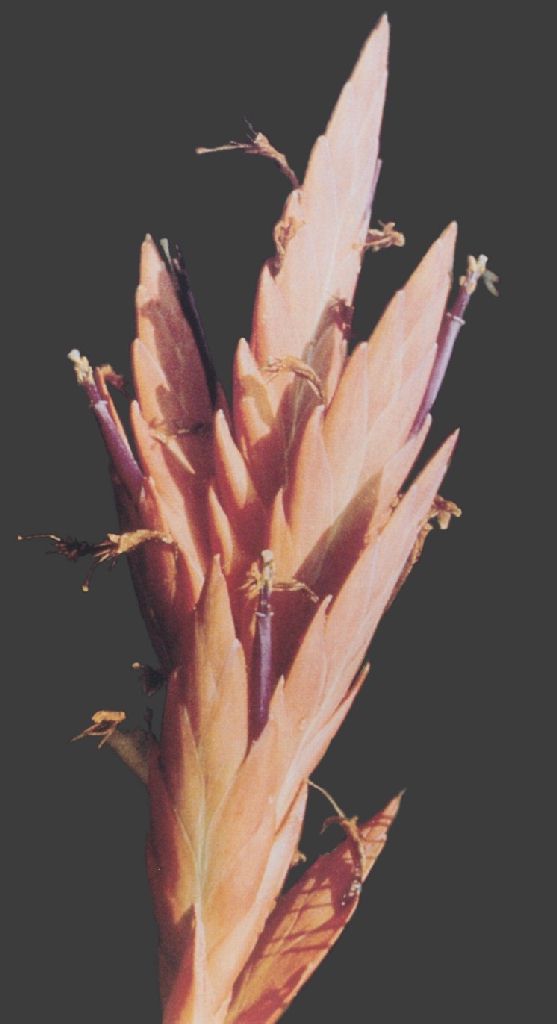
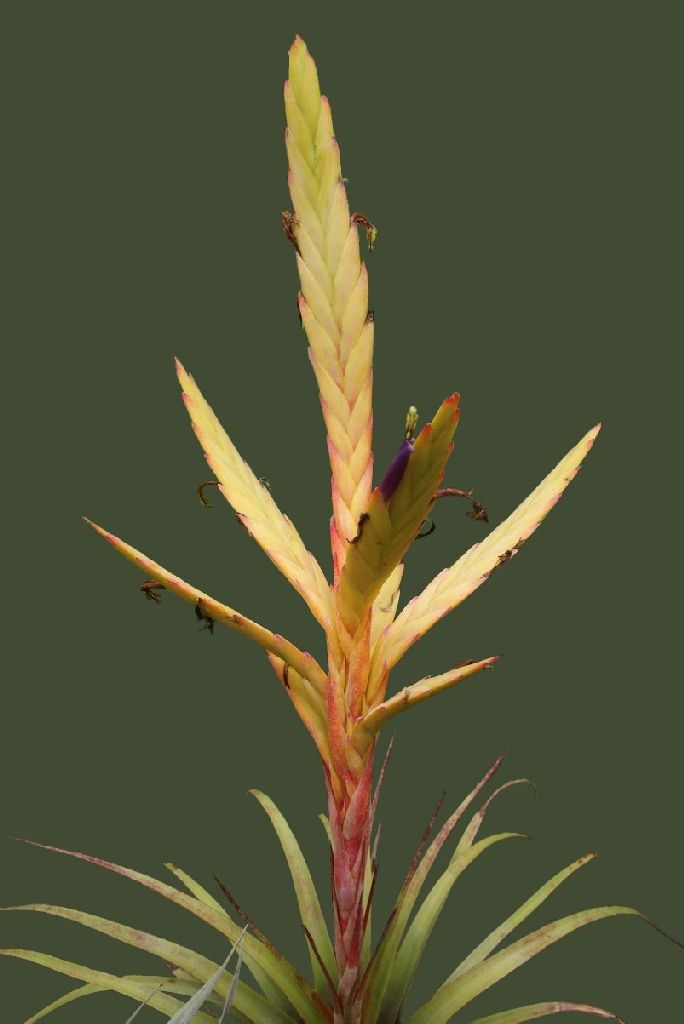
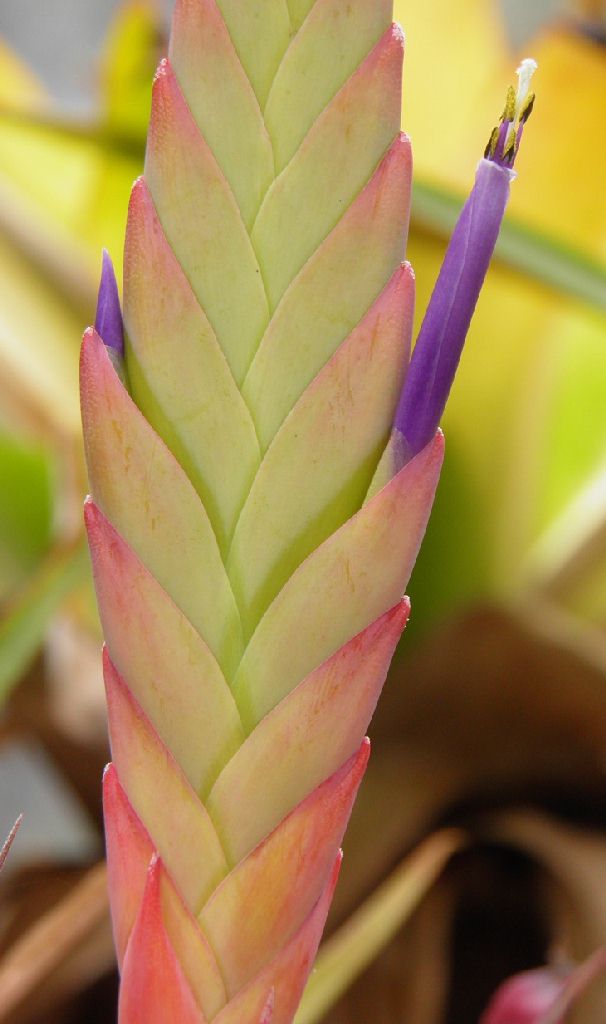
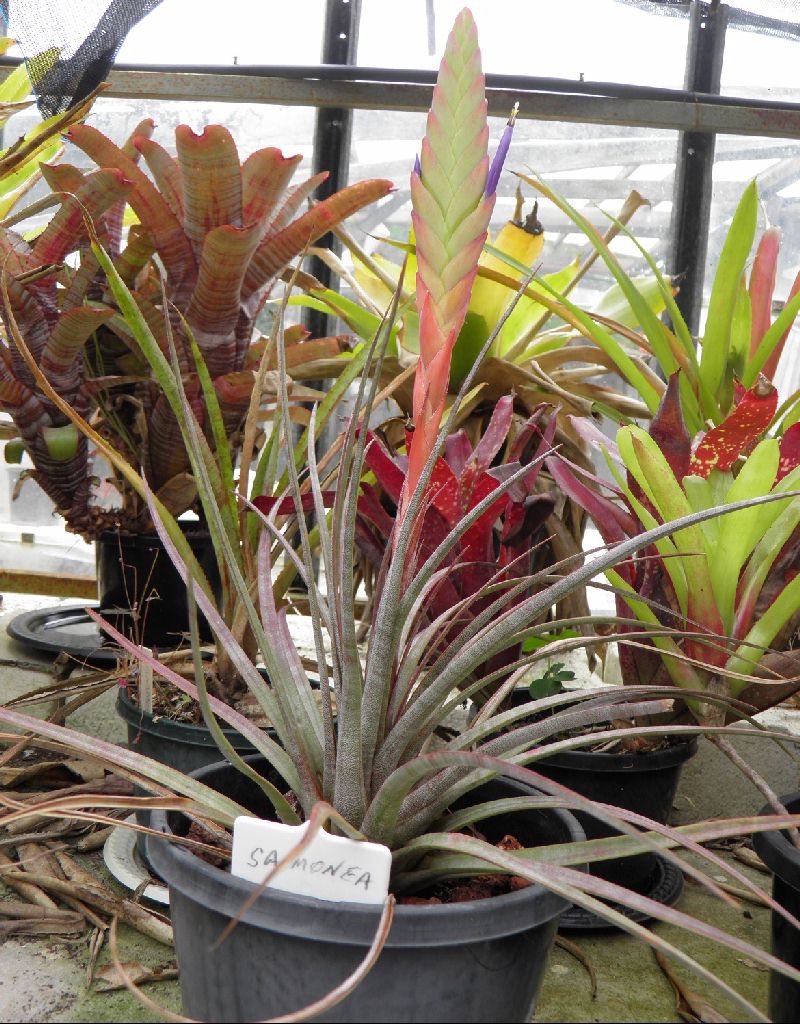
Peter Tristram....
"Funny how things go! Interesting stories, Len! Hereís another shot of a T. salmonea from Lydia taken 5 years ago. All pups I have parted with came from this plant. Itís a very slow growing, stocky plant with hard, brittle reddish leaves, very different to the softer, silvery leaves of T. tillii. I would be happy with either named after me!
Incidentally, I have klausii and ehlersiana in bloom now. Maybe I should cross them..."
Derek Butcher....
"A New Year message to remind you all that you need perseverance. My records show that I got this plant from Renate Ehlers in 1995. Even though it is terrestrial in Mexico I decided to play safe and grow it as an epiphyte on Mallee root. For 20 years it looked great as a plant but did not flower. As a last resort I decided on pot culture and it only took a year to perform. I do not know if it was the shock in moving, having its roots covered or Adelaide's extra-wet winter that did the trick."
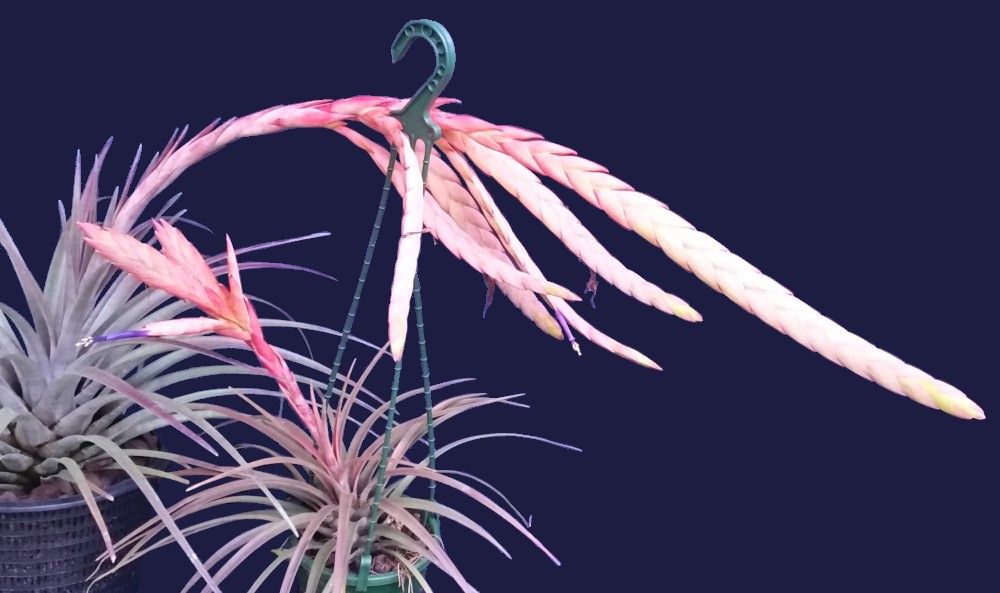
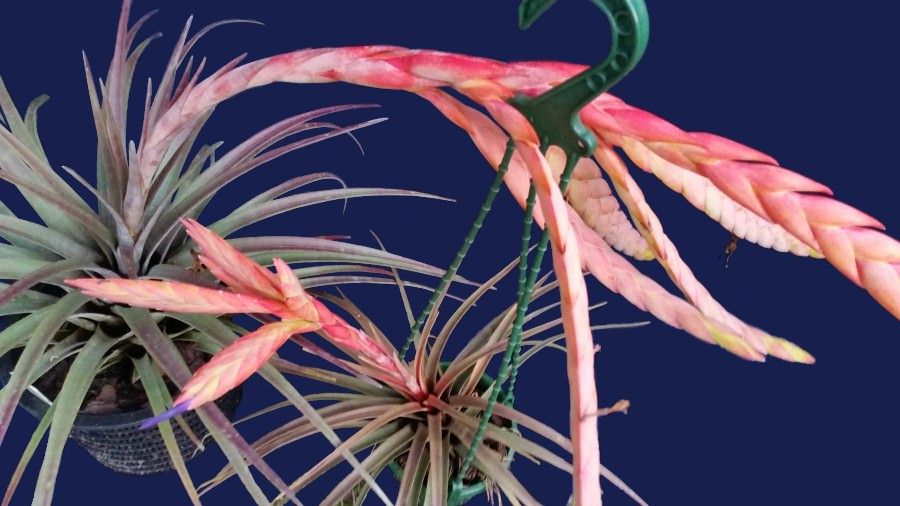
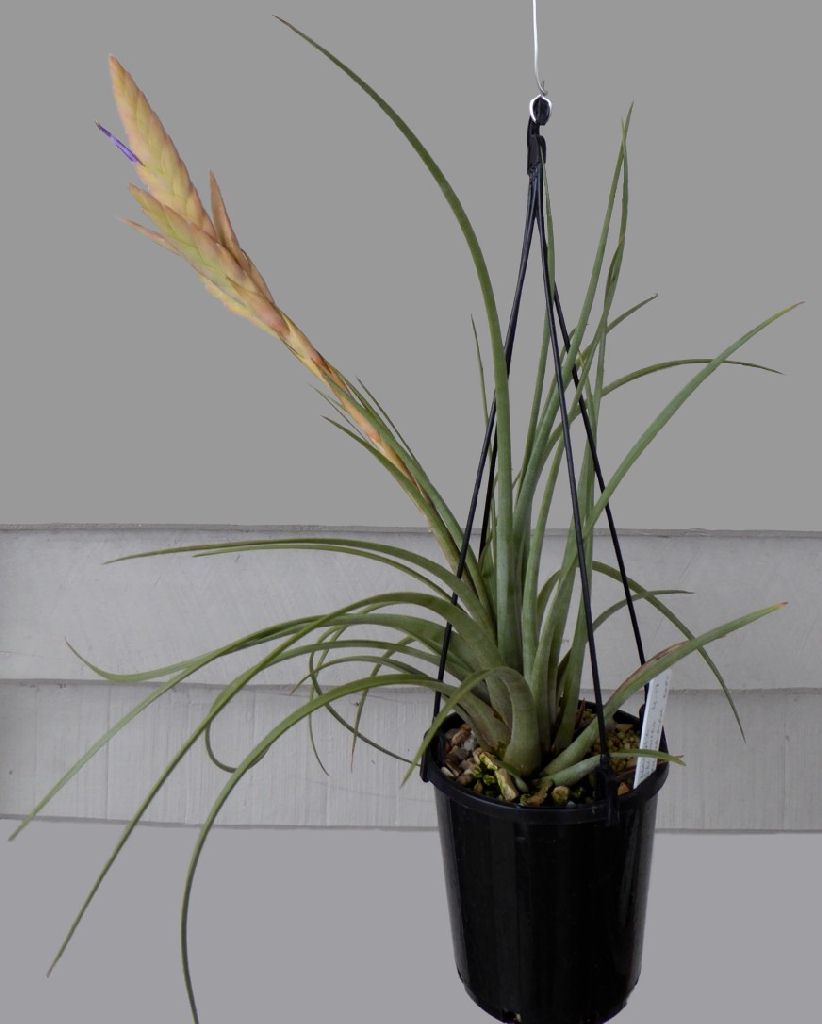
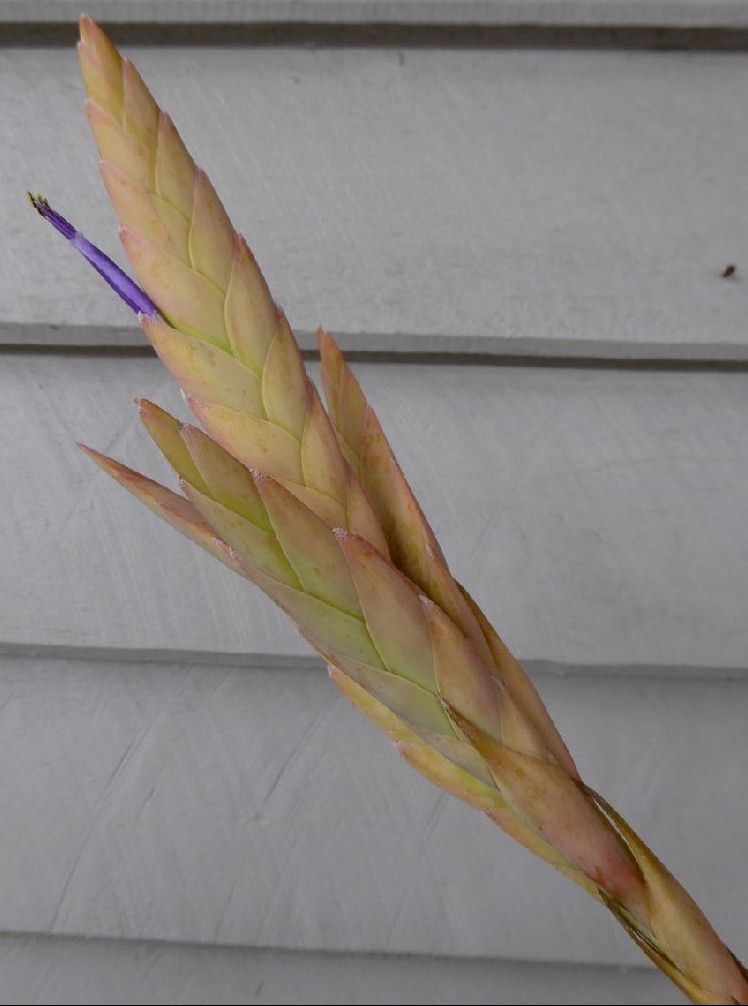
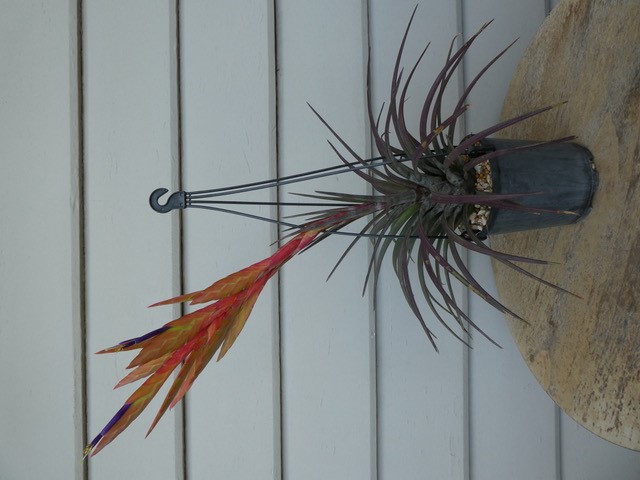
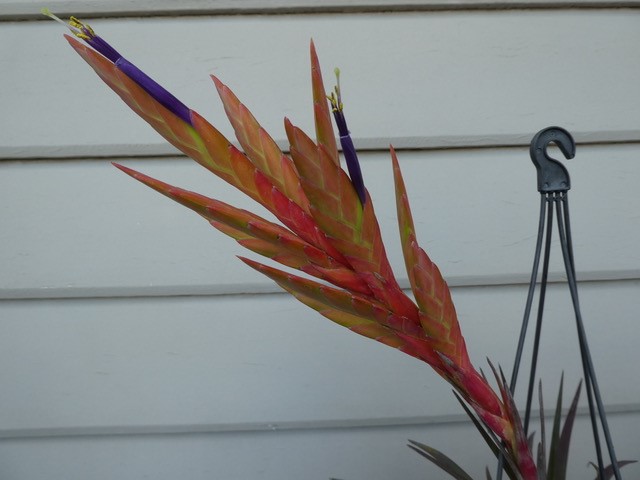
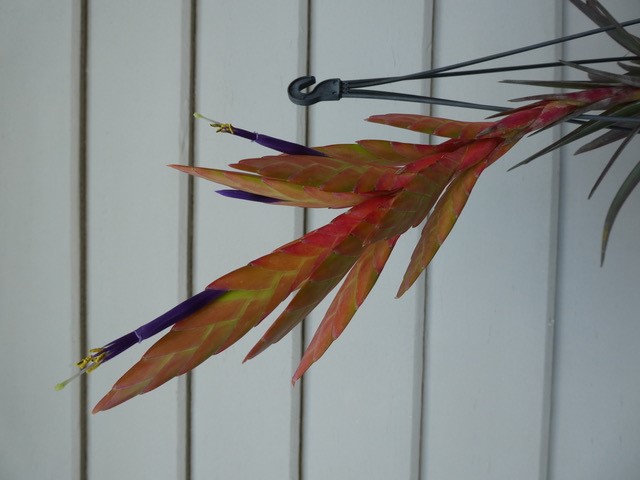
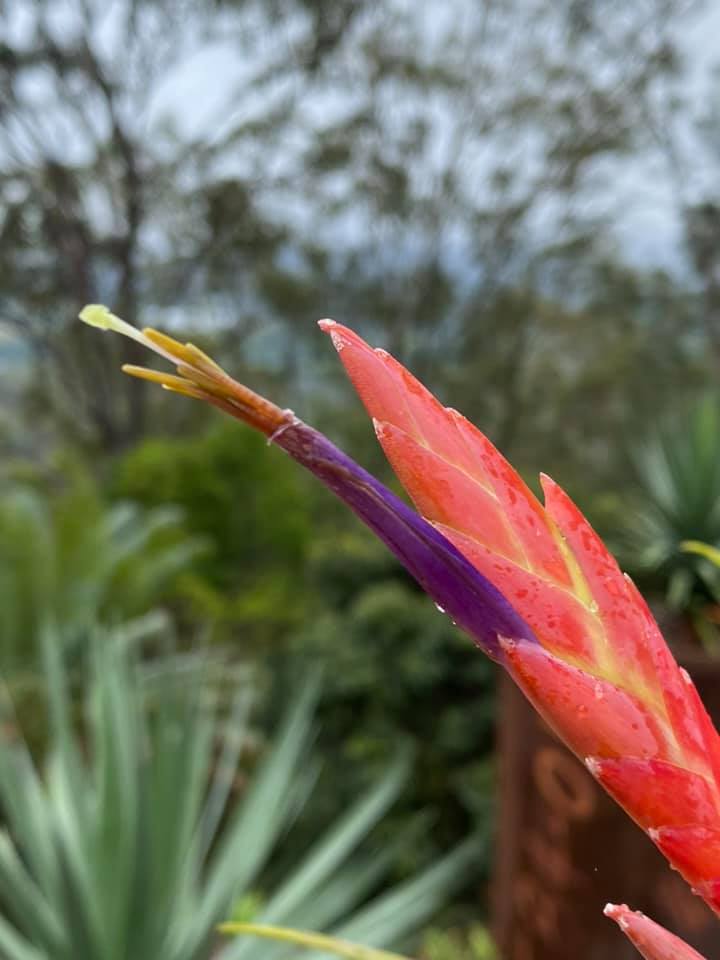
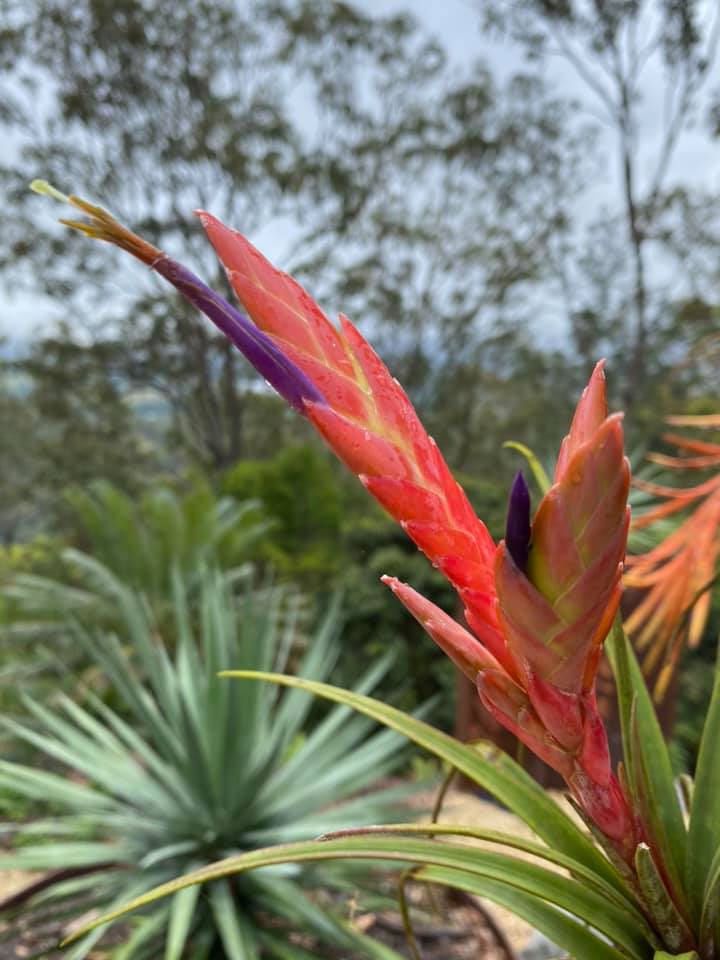
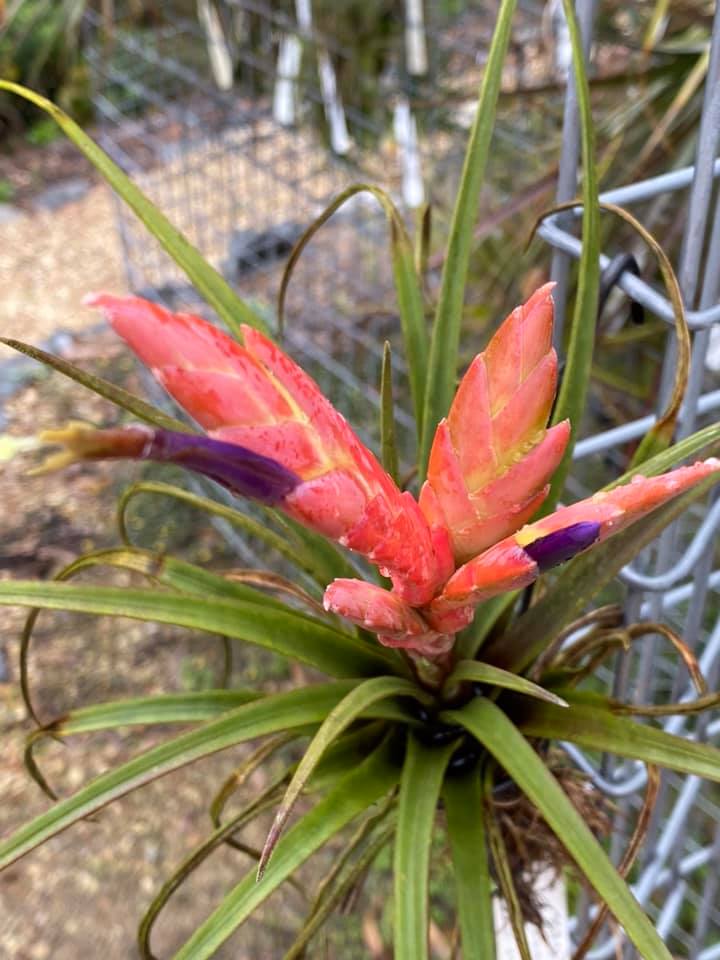
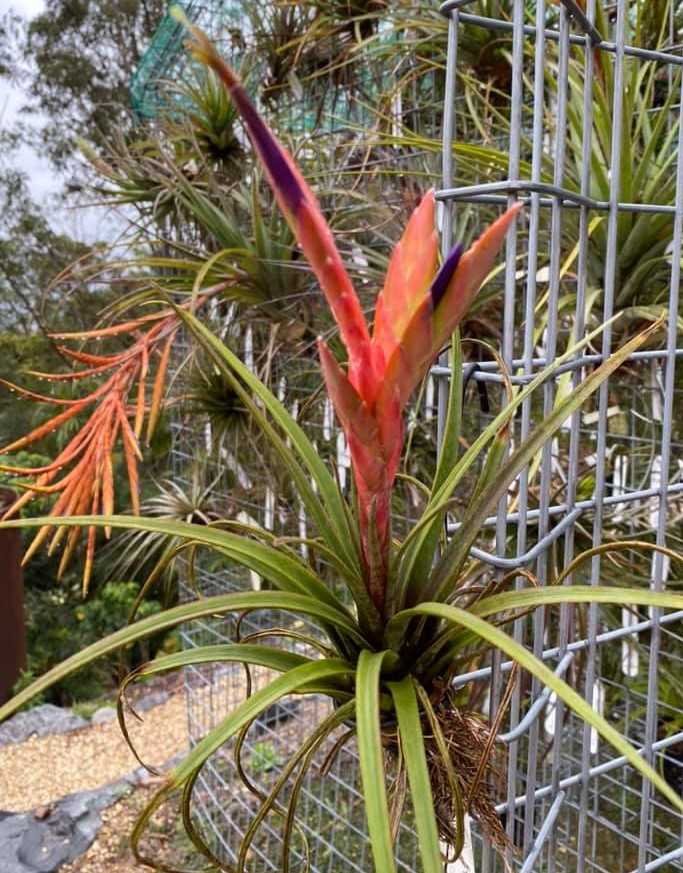
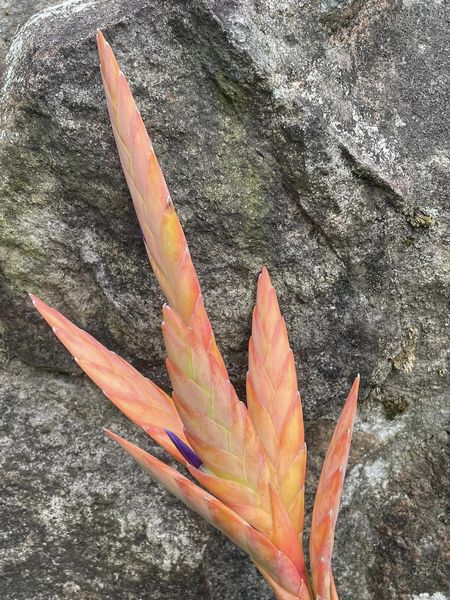
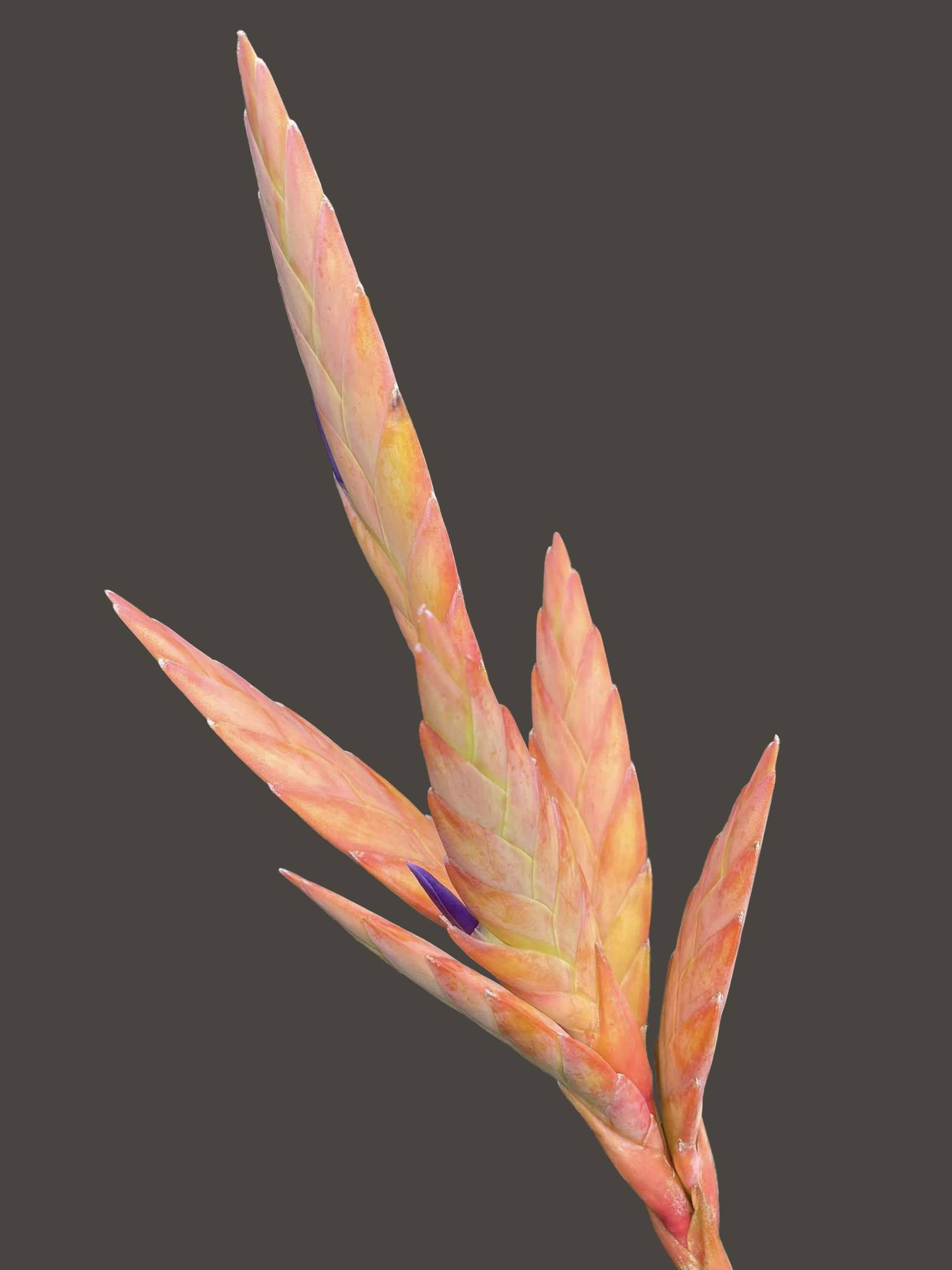
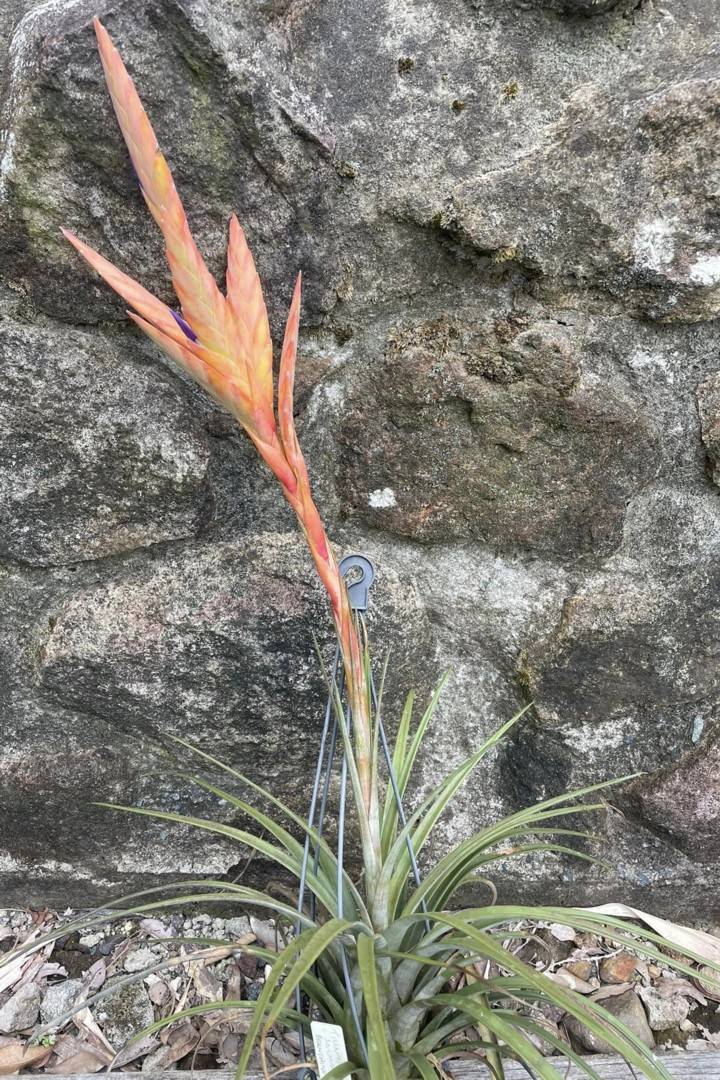
Plant terrestrial, growing singular or in groups, stemless, 20-60cm high, 60cm diam, the many leaves forming an erect, spreading rosette, flowering 30-90cm high, leaves very thick, hard and stiff, however, very brittle and easily broken.
Sheath distinct, to 7cm long, to 4.5cm wide, arched, elliptic, inside dark brown, outside light brown, both sides fine brown appressed scales.
Blade next to sheath (1.5)-2.5-3cm wide, to 25cm long, narrow triangular, attenuate, spreading or bent over, involute, keeled, nerved, dark greenish red, inside fine appressed scales, outside with greyish large scales and blotched.
Scape erect or bent over, 20-40cm long, mostly exceeding the leaf rosette, 0.6-1.2cm diam, round, glabrous, red, hard and woody, in the bottom half densely imbricate by the sheaths of the leaflike scape bracts, and not visible.
Scape bracts blade erect, to 25cm long, upper half carmine red, fine grey lepidote, internodes 3-4cm, the blades gradually decrease to 2-3cm long, triangular, sharp, often shortened to a hooked tip.
Inflorescence 16-30 (max 40) cm long, 6-12 (max 14) cm wide, widely exceeding the rosette, thyrsiform or subdigitate, erect or bent over, bipinnate, or simple (in habitat often a simple long spike), mostly 3-5 (max to 12) erect or spreading, polystichous spikes, the flat side next to the axis, internodes 1-4cm.
Primary bracts similar to the upper scape bracts, 4-7cm long, mostly shorter than the sterile basal part of the spike, joined on the broad side.
Spike 8-20(max 25)cm long, 2-4cm wide, narrow elliptic or lanceolate, complanate, with 2cm long, oval at the base, 5mm wide, erect stem, 7-20 sessile, distichous scentless flowers, in addition 3-5 sterile bracts at the base.
Floral bracts densely imbricate, internodes 1-1.5 cm, rhachis not visible, 3.5-4.9cm long, to 2.2cm wide, oval acuminate, often with a hooked almost cucullate tip, exceeds the sepal by 5-8mm, leathery, inside nerved, and small puntulate lepidote, outside glabrous, the tip sometimes with scattered large scales, apricot or salmon with a chalky covering.
Sepals 3-4cm long, 7-9mm wide, narrow elliptic, acuminate, light green, thin leathery, glabrous, nerved, all three are keeled, the posterior ones connate 5-7mm, (sometimes less)
Petals to 7.3cm long, the upper section 8mm wide, tongue shaped with a cavity forming an erect tube, with the tip a little bent outwards, dark violet (#56 grape violet) and the bottom white.
Stamens exceeding the flower,
Filament 7-8.5 cm long, in two unequally long series, the upper portion 1mm wide, oval, violet, narrow ribbonlike, at the base white.
Anther 3-3.5mm long, 1mm wide, elliptic, versatile, joined 1/3 from the base, dark brown.
Pollen egg yellow. Style 7-8cm long, white, upper portion violet.
Stigma 2-3mm long, 2mm wide, lobes somewhat spreading, papillose, yellow green, Type I Brown & Gilmartin.
Ovary 6-8mm high, 3-4mm wide, conical, light green.
Type locality Mexico, Chiapas, between Comitan and Frontera Comalapa, 1350m, growing on rocks. leg K & R Ehlers EM 891205, March 12th 1989, Holotype WU Paratype Chiapas near Querrero 800m leg Petra Stary s.n. 1990 WU.
Differs from T. rodriguesiana in
1. Leaves very fragile
2. Inflorescence often simple or few branched.
3. Spikes twice as long as wide.
4. Floral bracts as much as twice as long, cretaceous.
5. Sepals larger and acuminate, less connate.
6. Petals almost twice as long, dark violet.